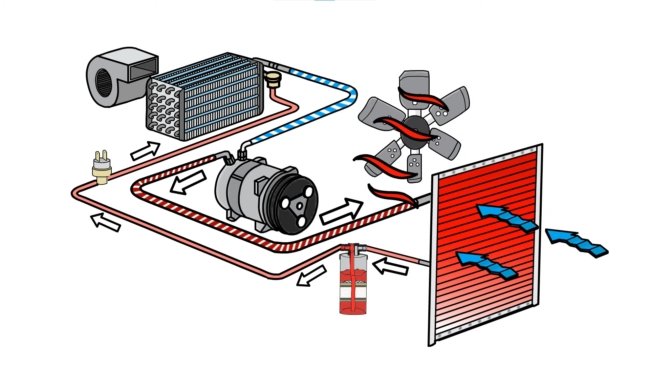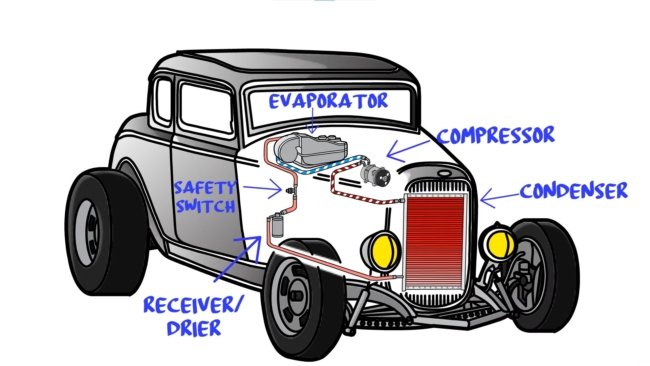
For many, automotive air conditioning has long been a system shrouded in mystery. Clambering in to any old jalopy equipped with A/C and flipping the fan switch brings with it the expectation that passengers will be doused in refrigerated refreshment pouring from the vents. When that isn’t the case, it usually takes some basic understanding of the system to adequately troubleshoot and remedy any cold air blues.
With an HVAC history that dates back to 1976, few comprehend the inner workings of A/C like Vintage Air. In fact, their understanding is so intimate that they were able to succinctly explain how the whole system functions in just three short minutes of movie magic.

“The way air conditioning works is you take the heat out of air within an enclosed area,” the narrator explains. Basic components to do that include a condenser, receiver/dryer, safety switch, expansion valve, evaporator, compressor, and interconnecting hoses.
Here’s the short version: starting at the compressor, hot, gaseous refrigerant is pumped into the condenser where heat is removed and the gas condenses into a high-pressure liquid. From there, it travels through the receiver/dryer, safety switch, and expansion valve before reaching the evaporator which is in the vehicle.

As the refrigerant passes through the evaporator, it picks up heat from the interior, turns back into gas, and gets pulled into the inlet of the compressor to start the cycle over again. Cool air coming from the vents is the result of that sequence, but the sorcery behind the scenes is all about removing heat.
We can attest that windows-up cruising really is the way to go and, with a thorough understanding of both hot rods and cold air, Vintage Air can get you there.







